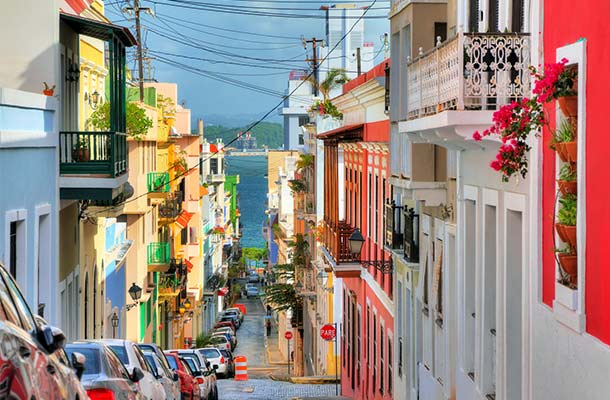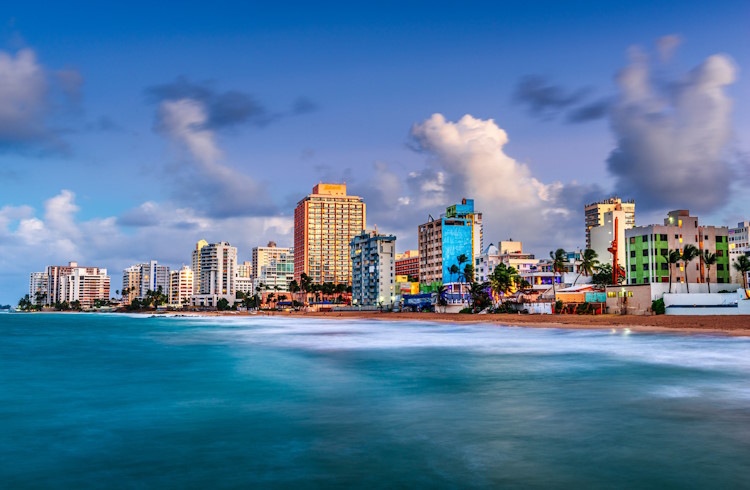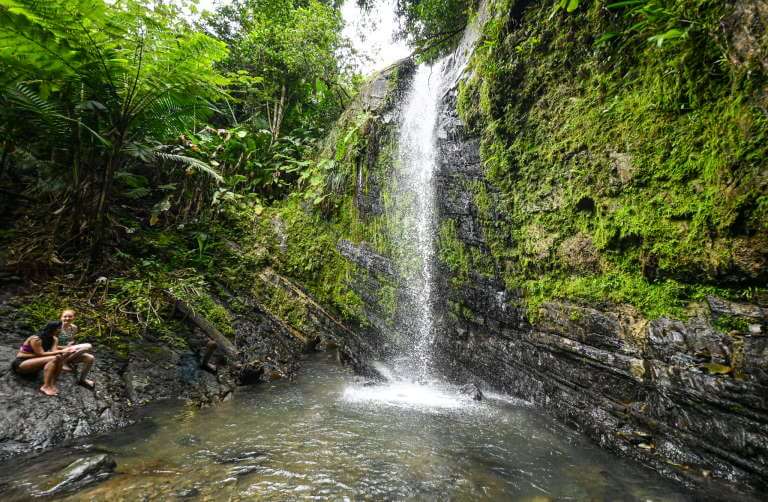Is Puerto Rico Safe to Visit? Health & Safety Tips for Travelers
Beautiful Puerto Rico is one of the most popular destinations in the Caribbean, but is it dangerous? Our local expert shares what you need to know about Puerto Rico safety, from avoiding crime to dealing with weather events.
 Photo © iStock/dennisvdw
Photo © iStock/dennisvdw
- Updated December 2023 -
Puerto Rico is a commonwealth of the United States of America. Although it is not a state, Puerto Rico falls under the United States federal jurisdiction and has its own state laws that citizens abide by. Millions of travelers visit Puerto Rico each year, with the majority having a trouble-free experience, but, as you would anywhere, use your common sense.
As someone who was born and raised here, these are my top travel safety tips for Puerto Rico.
- Is it safe to travel to Puerto Rico?
- Crime in Puerto Rico
- Is San Juan safe?
- Car theft in Puerto Rico
- Women's safety
- LGBTQ+ safety
- Laws in Puerto Rico
- Drinking age
- Photography rules and regulations
- Weather events in Puerto Rico
1. Is it safe to travel to Puerto Rico?
Traveling to Puerto Rico is generally safe, but like any destination, it comes with certain risks, particularly related to natural disasters. The Island has significantly recovered from Hurricane Maria in September 2017 and a string of minor earthquakes in 2020. Many hotels and tourist attractions benefited from multimillion-dollar renovations and upgraded security infrastructure.
The Puerto Rican authorities have invested considerably in tourism development to rebuild the Island's economy, with tourism being a vital source of employment for the local population. Five years after Hurricane Maria, there have been significant improvements to the Island's infrastructure.
As for petty crime, visitors should exercise the usual precautions to safeguard their belongings. Minimizing the display of valuable items such as jewelry, cash, phones, and cameras is advisable. Petty crime and theft do happen in San Juan, just as in other big cities across the United States. By staying alert and taking these basic precautions, travelers can enjoy a safe and fulfilling visit to Puerto Rico.
2. Crime in Puerto Rico
Puerto Rico, home to about 3.2 million people, has a population concentration in urban areas such as the capital city, San Juan, and other larger towns such as Ponce and Mayagüez. As in many places with inequality and high population density, crime is often higher in those areas. But the overall crime rate is lower than the average US crime rate, and violent crime has been on the decline in recent years.
Tourists in Puerto Rico are more likely to encounter petty crimes such as theft. Here are our tips to avoid petty crime:
- Keep your valuables secure and don't leave your belongings unattended.
- Carry only essentials when out and about.
- Traveling in groups or using licensed taxis is safer for those planning to go out late at night. Puerto Rican taxis are identifiable by their white color and lit-up roof signs. Uber is also a reliable car share app widely available in San Juan, Ponce, and Mayagüez but not in the smaller cities and towns.
- Solo nighttime strolls, especially near beach areas, should be avoided due to a heightened risk of robbery.
During the day, local beaches are relatively safe, but it's still prudent to watch over your items. If you're going for a swim, keep an eye on your things, and don't stray too far from the shore.
More severe crimes, such as homicide, are predominantly linked to gang activity and the drug trade and typically do not involve tourists or the general populace.
Although there's a robust police presence in San Juan, especially in tourist areas such as Old San Juan, Santurce, and Condado, where police speak English, police presence is sometimes limited in smaller cities due to funding and staffing shortages.
Emergency numbers
As in the mainland United States, you can dial 911 to ask for police assistance.
Ambulance services and the fire department can also be reached through 911.
3. Is San Juan safe?
Several neighborhoods in San Juan are renowned for their safety and vibrant atmosphere, especially at night. Old San Juan, a historic district, offers a rich cultural experience with its well-preserved architecture and lively streets. Isla Verde is known for its beautiful beaches and upscale resorts, making it a popular choice for travelers. Miramar and Santurce are also bustling areas, popular for locals and travelers. Condado is another safe and fun area to explore with its trendy boutiques, restaurants, and beachfront hotels. During the day, Pinoñes, a beach community known for its small kiosks offering local fare, provides a vibrant atmosphere and great food.
These neighborhoods are particularly notable for their regular police patrols, which help ensure a secure environment for locals and tourists. As in other large metropolitan areas, there are pockets of San Juan with higher crime rates. The rule of thumb if driving at night is to treat traffic lights as stop signs after 11 pm. You will not get a ticket if you safely run a red light.

4. Car theft in Puerto Rico
In Puerto Rico, car theft and carjacking continue to be a concern. Like many metropolitan areas across the US, carjacking levels have risen after the pandemic. These are not isolated occurrences but are indicative of broader criminal patterns fueled by factors such as limited law enforcement resources, socio-economic challenges, and a black market for stolen vehicles.
When driving, keeping doors locked and valuables out of sight is advisable. While night driving is not necessarily discouraged, being extra cautious and avoiding less familiar areas, especially at night, can enhance safety.
5. Is Puerto Rico safe for women travelers?
Puerto Rico is generally a safe destination for women travelers. It's important to practice common-sense safety measures such as being vigilant when out and about, especially in bars and clubs. Additionally, it's wise to avoid exploring poorly lit or unfamiliar areas, particularly at night. Some travelers might encounter verbal harassment. Although this is often harmless, the best response is to ignore it.
6. Is Puerto Rico safe for LGBTQ+ travelers?
Puerto Rico is widely recognized as the Caribbean's most LGBTQ+-friendly destination, boasting a vibrant and inclusive atmosphere. The LGBTQ+ community is also a big part of the hospitality community, with several gay-owned hotels, restaurants, and bars. LGBTQ+ Puerto Ricans have the same legal protections as heterosexual locals, and same-sex marriage was legalized in 2015.
San Juan, the capital, is particularly notable for its lively LGBTQ+ scene. Areas such as Santurce and Condado Beach are hubs of activity, featuring a range of gay bars, clubs, and other LGBTQ+-friendly venues. Additionally, Puerto Rico hosts prominent LGBTQ+ events like Puerto Rico Pride and Orgullo Boquerón, which include parades featuring drag shows and rainbow-colored floats to mark the celebrations.
7. Laws in Puerto Rico
Puerto Rico, while a US territory, operates with a level of local autonomy similar to the relationship between US states and the federal government. This autonomy allows Puerto Rico to have its own flag and manage local affairs. However, Puerto Rico adheres to a system similar to that of the US mainland in legal matters, particularly criminal law. This means the island follows federal laws and standards, mirroring the dynamic where US states align with federal law while maintaining their own state laws and regulations.
8. Drinking age in Puerto Rico
In Puerto Rico, the legal drinking age is 18, in contrast to the United States, which is 21. This lower age limit applies to the purchase and consumption of alcohol in various establishments such as restaurants, bars, and liquor stores. It is also essential for visitors to be aware that drinking and driving is a serious offense in Puerto Rico. The blood alcohol limit is 0.08%, so it's best to walk or take a taxi if planning to consume alcohol.
Overall, while Puerto Rico's lower drinking age makes it an attractive destination for younger US travelers, it's crucial to adhere to local laws and exercise responsible behavior regarding alcohol consumption.
9. Photography in Puerto Rico
In Puerto Rico, drone regulations align with those in the United States. Key rules include registering your drone with the Federal Aviation Administration (FAA) and following safe flying practices. This means avoiding flying your drone near people, airports, crowded areas, and events to ensure safety and compliance.
Regarding photography, it's advisable to be mindful of your surroundings, especially in areas where safety might be a concern. Additionally, it's respectful and often necessary to ask for permission before taking photographs of individuals to avoid causing any offense or discomfort. This approach respects people's privacy and enhances your safety while capturing memories in Puerto Rico.
10. Weather events in Puerto Rico
Hurricane season in Puerto Rico, typically spanning from June to November, is a crucial factor for travelers to consider when planning their visit. During this period, the island can experience hurricanes or tropical storms, which may lead to severe weather conditions. It's important for visitors to stay updated on weather forecasts and heed any advisories or warnings issued by local authorities.
Engaging in water sports or activities such as surfing is highly discouraged during an impending hurricane or tropical storm due to the increased risk of strong currents, high waves, and unpredictable weather conditions. Safety should be the top priority, and travelers are advised to have flexible plans that allow for adjustments in case of severe weather. Knowing the location of the nearest shelters and having a communication plan are also sensible precautions during the hurricane season in Puerto Rico.
Related articles
Simple and flexible travel insurance
You can buy at home or while traveling, and claim online from anywhere in the world. With 150+ adventure activities covered and 24/7 emergency assistance.
Get a quote


No Comments